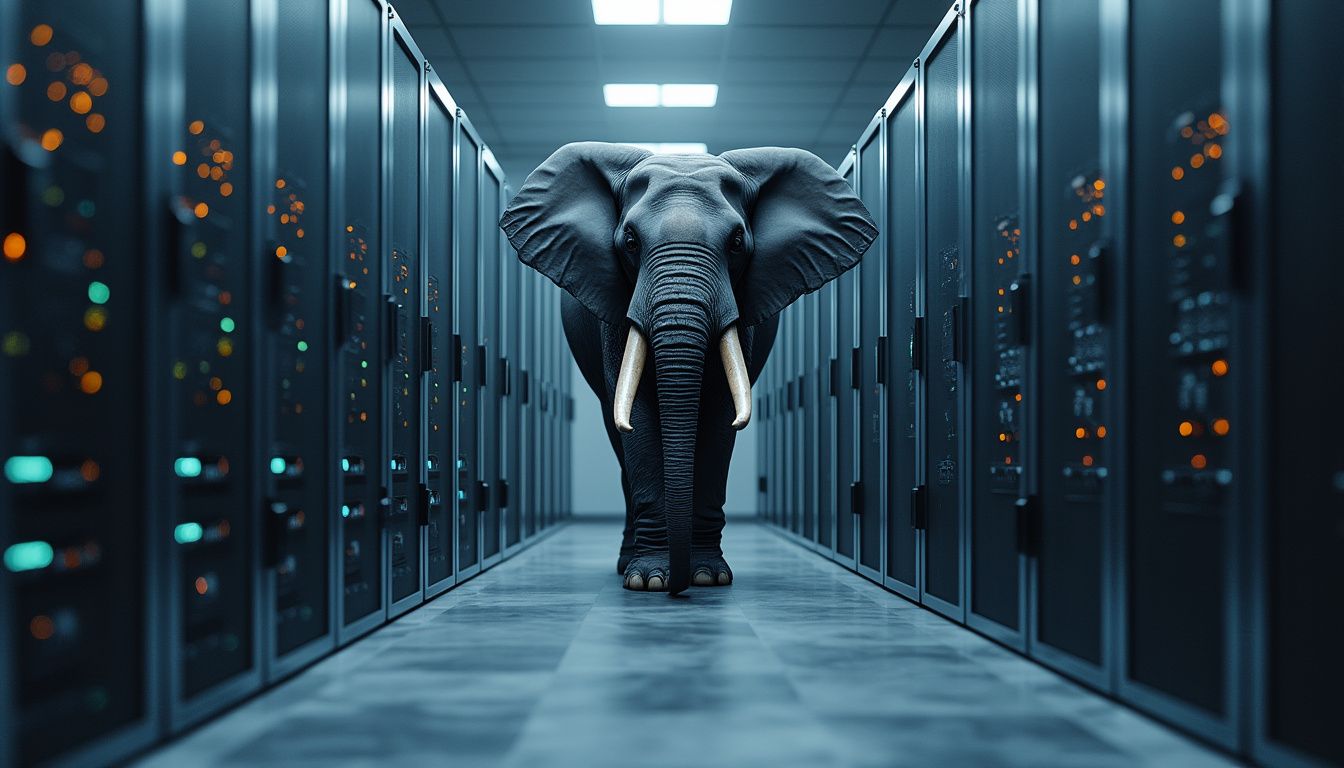The Elephant in the Server Room - 07/01/2025
There’s a quiet hum in the background. It’s the hum of servers running models, crunching data. And lately, that hum is coming from more places than just Silicon Valley. It’s coming from… elsewhere.
The Elephant in the Server Room

We love shiny new things. We chase the latest tech. We’re seduced by the promise of AI, the allure of language models that can do unimaginable things. And that’s okay. It’s human nature.
But then comes the hard part. The part where we have to choose.
There’s a quiet hum in the background. It’s the hum of servers running models, crunching data. And lately, that hum is coming from more places than just Silicon Valley. It’s coming from… elsewhere.
Different
The “different” is what makes it interesting. And difficult. Because it’s not about the technology anymore. It’s about the baggage. It’s about the questions we don’t like to ask ourselves.
The conversation, often unspoken, goes like this: “Should we use this? It’s open-source, it’s powerful, and the price is right. But…it’s different. It’s not from… here.”
Yes, I’m talking about arguably the best open-source model currently, Deepseek.
It’s fast. It’s accurate. It’s free.
And it’s from China.
We talk about algorithms, about parameters and training data, but what we really mean is trust.
We’re not just worried about a few lines of code. We’re worried about intent.
We’re trained to find the one flaw, the one thing that could go wrong. It’s human nature. It makes us feel smart.
Is that fair? Maybe not. Is it rational? Maybe. But it’s real. It’s the whisper in the hallway, the meeting behind closed doors. It’s the elephant standing in the server room.
We can’t just blindly embrace the shiny object. We can’t simply ignore the unasked questions. We have to acknowledge the elephant.
We’re not wrong to be concerned. China’s track record on cyber espionage is clear. Just last week they were caught inside U.S. Treasury systems. Their history of embedding backdoors in networking equipment isn’t a conspiracy theory - it’s documented fact.
But here’s the thing: we’re worried about the wrong risk.
When we fret about Chinese AI models, a lot of people are imagining secret code hidden in neural network weights, a digital trojan horse ready to exploit your system. But that’s not how this works. Models that we run are just math - billions of parameters that transform one set of numbers into another.
The real risk isn’t in the model weights.
It’s everything else
It’s in the package management systems we already trust blindly. It’s in the development tools and APIs that connect to remote servers. It’s in the gradual building of dependencies that seem innocent until they’re not. It’s in the API server that logs every request, every interaction, every piece of data that flows through it.
And most insidiously, it’s in the training data - the subtle biases and viewpoints that shape how these models think and respond. That’s where real influence happens. Not through secret backdoors, but through the front door, one interaction at a time.
When we focus on the wrong risk, we leave ourselves exposed to the real ones. We pat ourselves on the back for avoiding Chinese models while blindly running $ pip install of packages we’ve never vetted, in order to save minutes of development time.
The choice isn’t between “safe” American models and “dangerous” Chinese ones. The choice is between doing the hard work of building secure systems - with robust testing, proper sandboxing, and careful validation - or pretending that geography alone will save us.
Security theater feels good. Real security is harder.
But let’s at least be worried about the right things.
So ask yourself: what’s really in the server room? And are we prepared for what we might find?